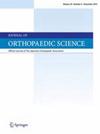Differences in the microstructural and mechanical qualities of semitendinosus tendon grafts between skeletally immature and mature patients in anterior cruciate ligament reconstruction
IF 1.5
4区 医学
Q3 ORTHOPEDICS
引用次数: 0
Abstract
Background
This study aimed to investigate the microstructural and mechanical properties of semitendinosus tendon graft tissues during anterior cruciate ligament reconstruction and the clinical outcomes in skeletally immature and mature patients.
Methods
Twenty-two patients who underwent primary anterior cruciate ligament reconstruction using a hamstring tendon graft were analyzed and divided into skeletally immature (n = 7) and mature groups (n = 15) based on magnetic resonance imaging findings of the epiphyseal plate of the distal femur. Tissue samples were collected from the mid-portion of the semitendinosus tendon. The collagen fibril diameter, maximum stress, and strain at maximum stress point in the semitendinosus tendon tissues were calculated for comparison of the microstructural and mechanical properties between the two groups. Postoperative outcomes were also assessed between the two groups.
Results
The mean and 60th and 80th percentiles of fibril diameters in the skeletally immature group were significantly smaller than those in the mature group (65.9 ± 13.0, 73.5 ± 19.3, and 91.3 ± 27.4 nm in the skeletally immature group; and 90.3 ± 14.7, 94.0 ± 18.4, and 125.3 ± 19.9 nm in the skeletally immature group; p = 0.001, 0.024, and 0.004, respectively). Additionally, the strain at maximum stress was higher in the skeletally immature group (237.2 ± 102.4% vs. 121.5 ± 51.9%, p = 0.024). However, there was no difference in maximum stress between the skeletally immature and mature groups (19.9 ± 14.3 MPa vs. 24.5 ± 23.4 MPa, p = 0.578). Strain was negatively correlated with the mean fibril diameter and the 60th and 80th percentiles of fibril diameters, whereas stress was positively correlated with the mean fibril diameter. The skeletally immature group had a higher pivot shift test-positive rate than the mature group at the last follow-up (p = 0.023).
Conclusion
Semitendinosus tendon graft tissues differed microstructurally and mechanically between skeletally immature and mature patients.
Level of evidence
Level Ⅳ
前交叉韧带重建中骨未成熟与成熟患者半腱肌腱移植物显微结构和力学质量的差异。
背景:本研究旨在探讨半腱肌腱移植组织在前交叉韧带重建中的显微结构和力学特性以及骨骼未成熟和成熟患者的临床结果。方法:根据股骨远端骺板的磁共振成像结果,对22例行腘绳肌腱重建的患者进行分析,并将其分为骨未成熟组(n = 7)和成熟组(n = 15)。从半腱肌腱中部收集组织样本。计算半腱肌腱组织的胶原纤维直径、最大应力和最大应力点应变,比较两组的显微结构和力学性能。同时对两组患者的术后结果进行评估。结果:骨未成熟组原纤维直径均值及60、80百分位数均明显小于成熟组(65.9±13.0 nm, 73.5±19.3 nm, 91.3±27.4 nm);骨未成熟组为90.3±14.7、94.0±18.4、125.3±19.9 nm;P分别= 0.001、0.024和0.004)。在最大应力下,骨未成熟组的应变更高(237.2±102.4%比121.5±51.9%,p = 0.024)。然而,骨未成熟组和骨未成熟组的最大应力没有差异(19.9±14.3 MPa vs. 24.5±23.4 MPa, p = 0.578)。应变与平均原纤维直径及第60、80百分位呈负相关,而应力与平均原纤维直径呈正相关。末次随访时,骨未成熟组pivot shift检测阳性率高于成熟组(p = 0.023)。结论:半腱肌腱移植组织在骨未成熟和成熟患者之间存在显微结构和力学差异。证据等级:Ⅳ级。
本文章由计算机程序翻译,如有差异,请以英文原文为准。
求助全文
约1分钟内获得全文
求助全文
来源期刊

Journal of Orthopaedic Science
医学-整形外科
CiteScore
3.00
自引率
0.00%
发文量
290
审稿时长
90 days
期刊介绍:
The Journal of Orthopaedic Science is the official peer-reviewed journal of the Japanese Orthopaedic Association. The journal publishes the latest researches and topical debates in all fields of clinical and experimental orthopaedics, including musculoskeletal medicine, sports medicine, locomotive syndrome, trauma, paediatrics, oncology and biomaterials, as well as basic researches.
 求助内容:
求助内容: 应助结果提醒方式:
应助结果提醒方式:


